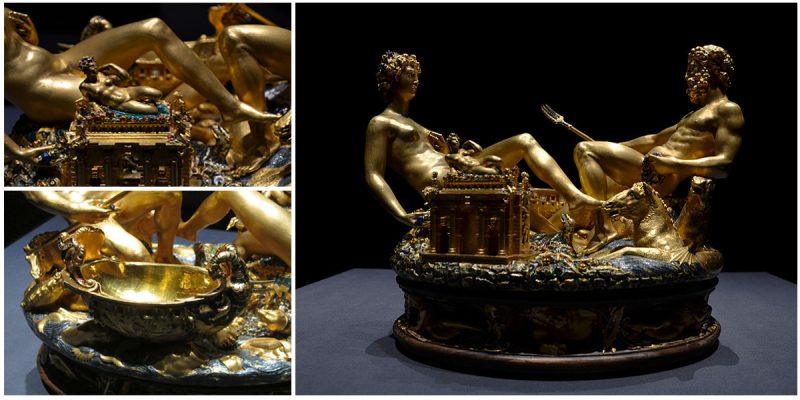The Cellini Salt Cellar is one of the world’s greatest Renaissance artifacts, a part-enamelled gold table sculpture created by the Florentine genius Benvenuto Cellini for Francis I of France, between 1540 and 1543. The saltcellar was created in the Mannerist style of the late Renaissance and shows an allegory of the Earth and the interplay of land and sea.
A male figure (Neptune, the god of the sea, is reclining beside a ship supported by fish, a vessel for holding the salt), represents the sea, and the female figure, (the Roman goddess, Tellus or Terra), represents the earth. Beside Tellus is a miniature temple where peppercorns were to be stored.
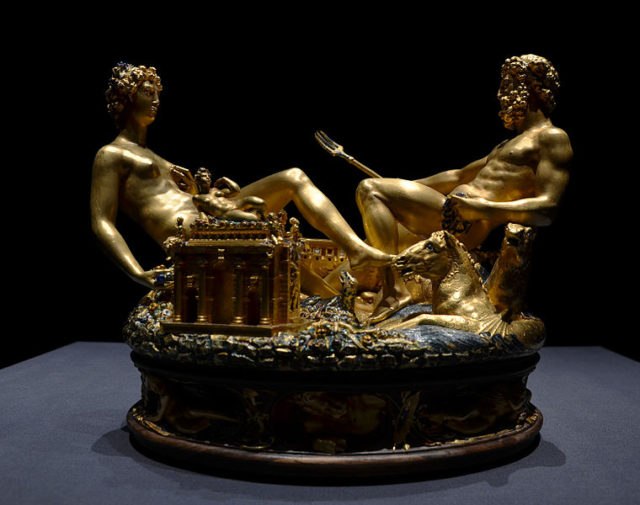
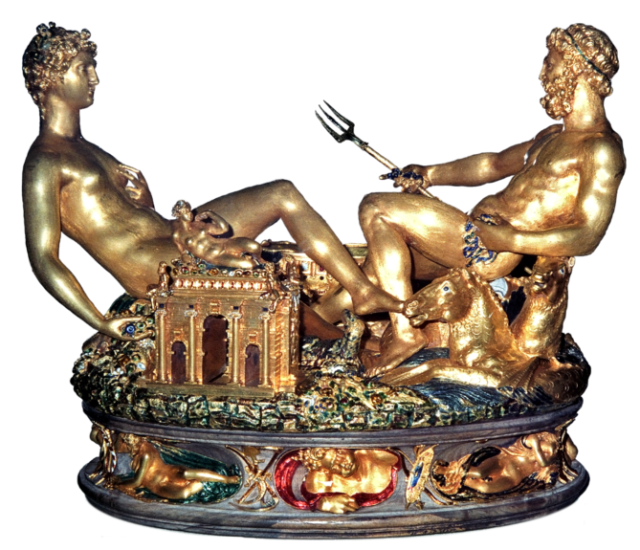
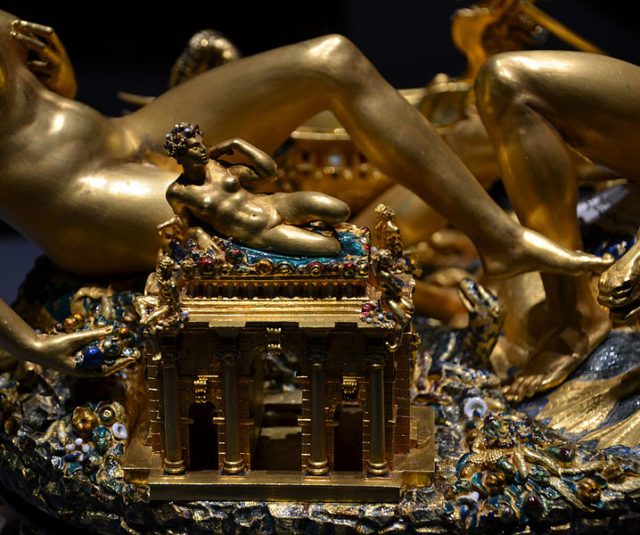
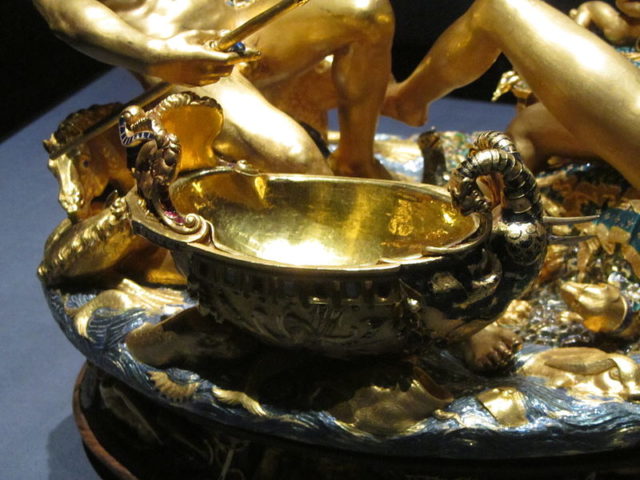
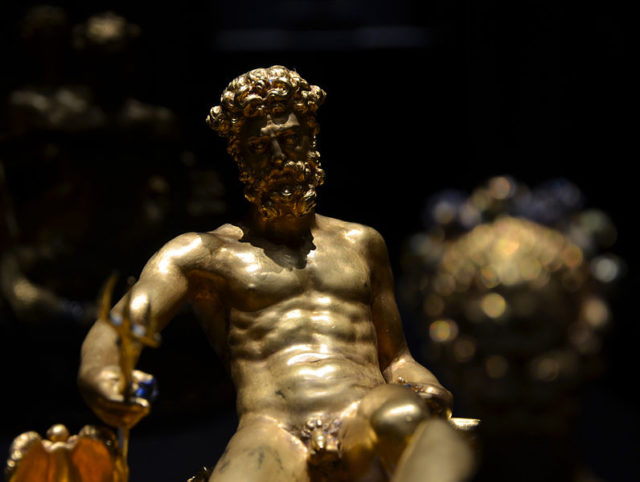
The Saliera is the only work of gold which can be attributed to Cellini with certainty and is sometimes referred to as the “Mona Lisa of Sculpture”. It was commissioned by François I during the artist’s stay in Paris in 1540-1543 and was subsequently given by Charles IX to Archduke Ferdinand II of Tyrol as a gift, who had acted as a proxy for Charles in his wedding to Elizabeth of Austria in 1570.
Measuring approximately 10 inches in height and 13 inches in width, the salt cellar is made of ivory, rolled gold (sculpted by hand), and vitreous enamel. The base, about 33.5 cm wide, depicts the winds, the times of day and human activities.
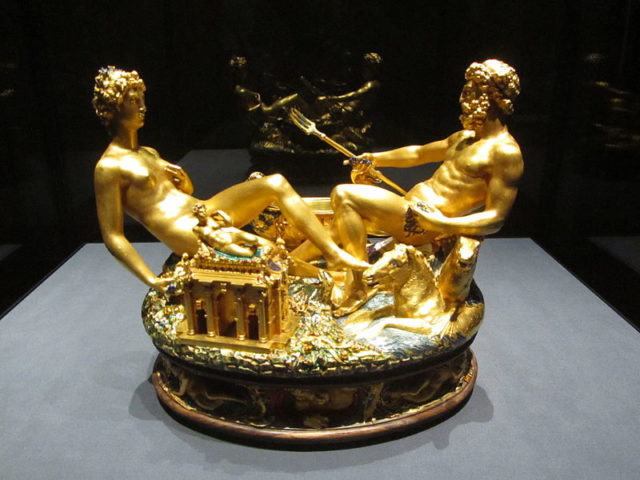
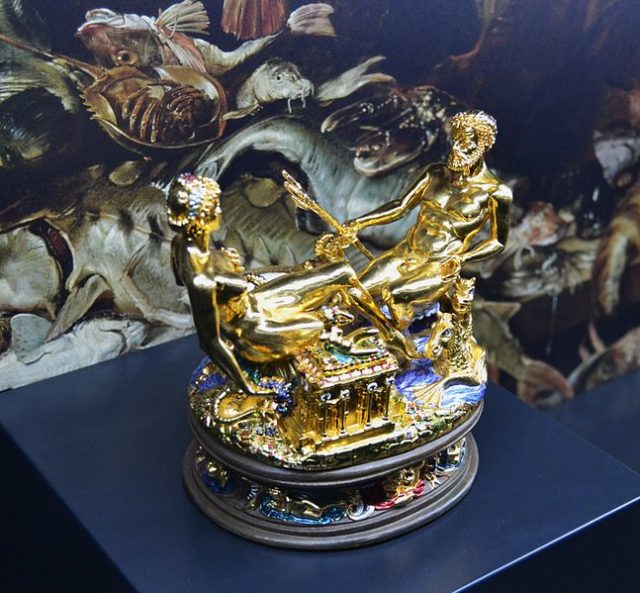
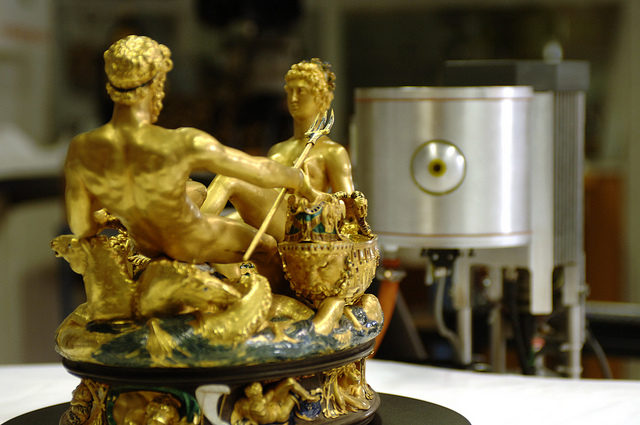
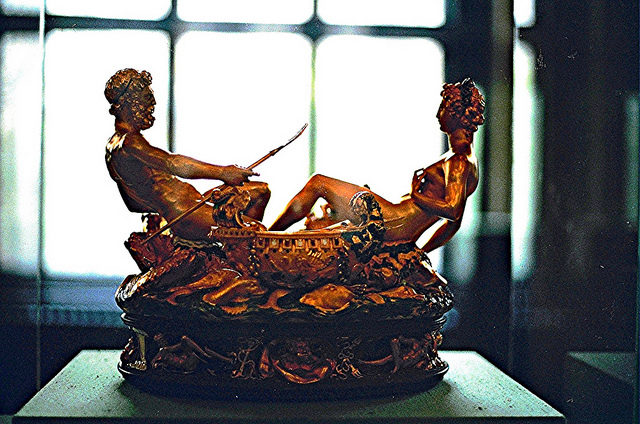
The saltcellar has no sculptural counterpart and it is Cellini’s only surviving metalwork.
It was originally part of the Habsburg art collection at Castle Ambras but was transferred to the Kunsthistorisches Museum in Vienna during the 19th century.
